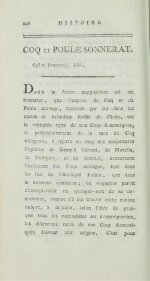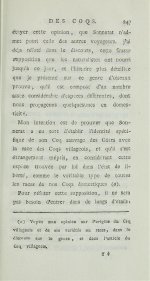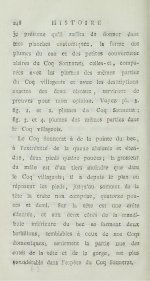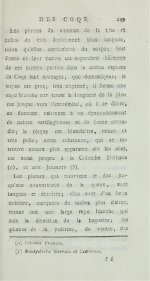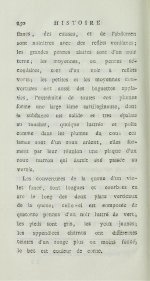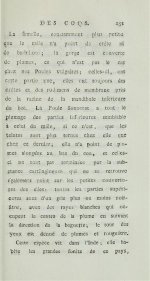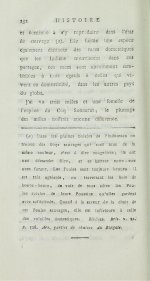Björn Bergenholtz
(former alias "Calalp")

As I basically focus on the Etymology of the Common Bird names in Swedish I´ve only tried to understand one, just one, of the Birds commemorating Sonnerat … the other sonnerati/sonneratii Birds have completely different names in Swedish.
And as far as I understand there is little doubt that Grey Junglefowl Gallus sonneratii TEMMINCK 1813 a k a "Sonnerat's Junglefowl " commemorates the French Naturalist and traveller Pierre Sonnerat (1748*–1814).
*Some sources claim he was born "…vers 1745" (about 1745) in Lyon, but all agree that he died in Paris 1814?!
This Junglefowl was described in: Temminck, J. 1813. COQ ET POULE SONNERAT. Histoire Naturelle Générale des Pigeons et des Gallinacés II : s 246-252. (attached, in this and Post #2) … and there I´m at a dead end. Since my knowledge of French is, to say the least, meager I have´nt got a clue why!?
I can only hope for anyone of you French knowing Bird Forum readers to explain what the type description says. Is there any part, or just an odd sentence, that explain how this bird came to be "his"? I Can spot his name in the first sentence on Page 246, and after that, here and there in the following six pages … but that doesn´t help me. I´m lost.
What did he do to deserve such an honour?
PS. According to Jobling (2010) the same Sonnerat is also commemorated in:
● Banded Bay Cuckoo (Penthoceryx) Cacomantis sonneratii LATHAM 1790.
● Greater Green Leafbird Chloropsis sonnerati JARDINE & SELBY 1827.
● … and the invalid "Strix sonnerati" TEMMINCK 1823 (Syn. with today's; White-browed Hawk-owl Ninox superciliaris VIEILLOT 1817).
And as far as I understand there is little doubt that Grey Junglefowl Gallus sonneratii TEMMINCK 1813 a k a "Sonnerat's Junglefowl " commemorates the French Naturalist and traveller Pierre Sonnerat (1748*–1814).
*Some sources claim he was born "…vers 1745" (about 1745) in Lyon, but all agree that he died in Paris 1814?!
This Junglefowl was described in: Temminck, J. 1813. COQ ET POULE SONNERAT. Histoire Naturelle Générale des Pigeons et des Gallinacés II : s 246-252. (attached, in this and Post #2) … and there I´m at a dead end. Since my knowledge of French is, to say the least, meager I have´nt got a clue why!?
I can only hope for anyone of you French knowing Bird Forum readers to explain what the type description says. Is there any part, or just an odd sentence, that explain how this bird came to be "his"? I Can spot his name in the first sentence on Page 246, and after that, here and there in the following six pages … but that doesn´t help me. I´m lost.
What did he do to deserve such an honour?
PS. According to Jobling (2010) the same Sonnerat is also commemorated in:
● Banded Bay Cuckoo (Penthoceryx) Cacomantis sonneratii LATHAM 1790.
● Greater Green Leafbird Chloropsis sonnerati JARDINE & SELBY 1827.
● … and the invalid "Strix sonnerati" TEMMINCK 1823 (Syn. with today's; White-browed Hawk-owl Ninox superciliaris VIEILLOT 1817).
Attachments
Last edited:




